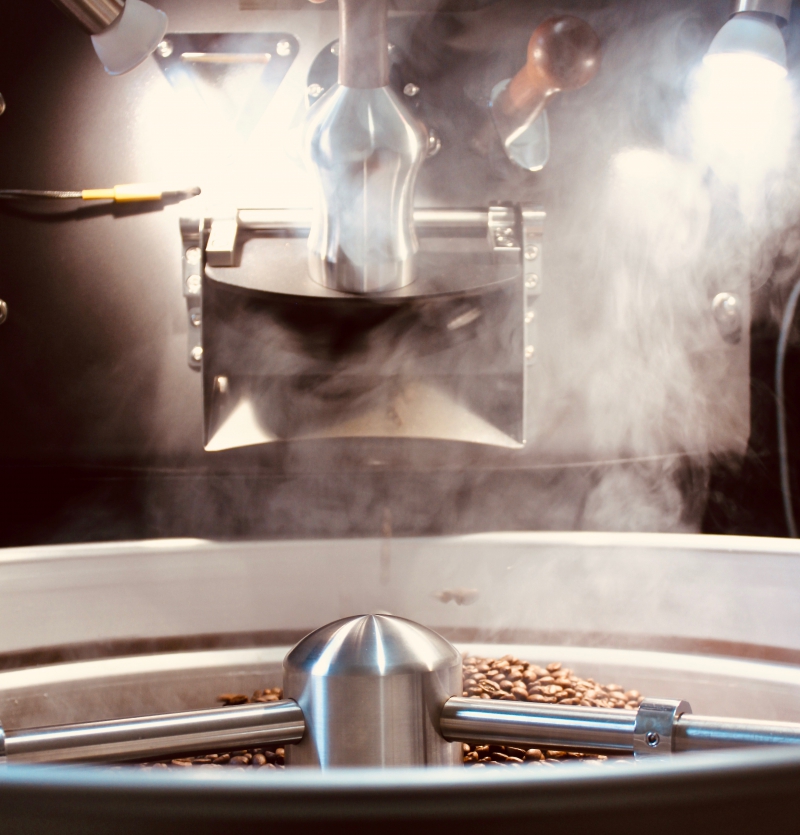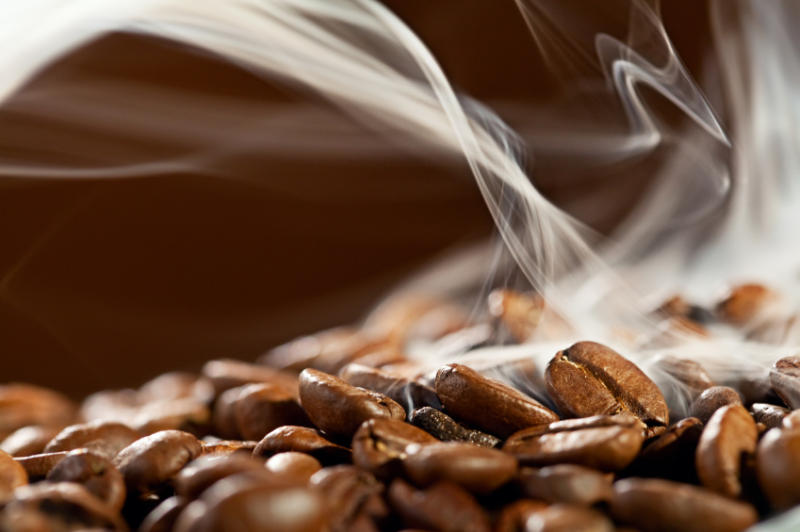We know from our love of braai-ing, that smoke is a natural outcome of getting the best cooked meat. The same is true of coffee roasting, the process creates a large amount of smoke and while this can be managed without an afterburner, more and more roasters are looking for a solution to reduce this output. Neil Maree of Genio Roasters explains.

Choosing a Filtration Device for your Roastery without the smoke and mirrors
Smoke and odours are natural by-products of roasting coffee beans. Filtration devices can reduce smoke by up to 90% depending on various circumstances. Educate yourself on the pros and cons before you accept the quote from the manufacturer and make the capital investment.
We as roasters, our clients, governments and our communities are now more sensitive about climate-impacting activities than ever. While coffee roasters make up the tiniest of fractions of carbon emissions around the world, we are still part of our local communities and want to bring our part in providing a sustainable future for our children.
There are two major parts of smoke removal: Visible and odorous. Visible smoke can be seen from afar and it can quickly turn a community against you if that smoke lingers around or is seen to enter the homes or offices around you. Smoke is of course carcinogenic, so it is not something that anyone wants to have pumped into the living rooms or offices during the day. Odour on the other hand is something that many new roasters think of as a romantic, coffee flavoured scent. But this is far from the truth. Coffee roaster smoke smells nothing like real coffee and is considered an irritating odour by most. Especially if you have to smell it day after day. Both visible smoke and odour need to be treated, but some methods are better than others at treating one or the other.
Roaster Compatibility of Filtration Devices
It is very important to remember that a filtration device, such as an afterburner or an electrostatic precipitator (ESP) filter, is compatible with any roaster. You do not have to buy a manufacturer’s specific unit. It is like a trailer for a car. Any manufacturer’s afterburner or ESP filter can work on any roaster. So, when a manufacturer quotes you on an afterburner, it does not have to be used on that particular manufacturer’s roaster; It can be used interchangeably.
There are currently 3 ways to reduce smoke during the roasting process – with an Afterburner, an ESP filter or a Wet Scrubber.
The cost, maintenance, and efficacy of these devices require careful consideration
1. What is an Afterburner?
The more traditional way of minimising smoke in a coffee roastery is with an afterburner. An afterburner is essentially an insulated tube with a high power gas burner. Smoke enters the chamber and is incinerated by the burner into carbon. Nearly all of the volatile organic compounds (VOCs) and smoke particles are reduced to carbon, leaving virtually no visible smoke or odour.
Catalytic Afterburner or Catalytic Converter
A catalytic afterburner or catalytic converter is the modern upgrade to an afterburner. One of the main advantages of a catalytic converter is that they reduce the operating temperature of the afterburner. Afterburners require about 700 to 800°C to reduce smoke to carbon. By using a catalytic converter, you can reduce the temperature to about 350 or 400°C, which means that you also use far less gas.
Reticulating Afterburner
These unique devices reuse the hot air from the afterburner for roasting. After the smoke and odour are burned off, the hot air is fed back into the roaster to roast the beans. This is by far the most energy-efficient smoke abatement system on the market and Genio Roasters is investing heavily into getting technology to market. Companies like Loring and IMF have already implemented such systems to good effect although the cost for such systems can still be prohibitive to most.
Capital Investment and Gas Usage
The initial capital investment for an afterburner is high and if you add a catalytic converter to that it is even higher (but a cat almost halves your gas bill). By increasing your initial investment, you can decrease your running cost on the afterburner by using a catalytic converter. Catalytic converters do have a shelf life, so they do have to be replaced at some point and the manufacturer of the unit can give you some indication of when that should happen.
Efficacy and Sustainability
Afterburners can reduce 90-95% of the visible smoke and odour from your roastery. However, from an environmental and sustainability perspective it is unfortunately not as ideal, because it is simply displacing your carbon footprint from one point to another. You are reducing your own smoke, but the gas usage also creates a carbon footprint, and you are simply displacing that to whoever supplied your fossil fuel to create the gas which you used to reduce your own carbon footprint.
We cannot get away from the sustainability issue, but we can at least reduce the impact that smoke has on our immediate community by filtering out the smoke that our coffee roasters produce. Just remember that a coffee roasting machine in itself does not produce smoke. It is the coffee that you put into the roaster that produces smoke.
Bear in mind that afterburners can be susceptible to fires. Because of the high operating temperatures, any buildup of coffee oils in the pipes or chaff that is blown into the unit will immediately be set alight. So while the afterburner itself is low maintenance, the system around it still needs to be maintained, although this is always the case for any roaster.
2. What is an Electrostatic Precipitator (ESP)?
The second way of reducing smoke is through an electrostatic precipitator (ESP). An ESP works by producing an extremely high voltage current that passes on the electrons to the smoke, charging the smoke negatively and allowing magnetism to do its magic in filtering out the ions.
Let’s put our science hats on for a moment: Think of creating tiny little magnets from each and every smoke particle, and then introducing a ground plate (usually an aluminium plate) that is positively charged (Earth is seen as “positive” in this scenario since it is not “negative” as such). The electrons are negative, the ‘ground’ is positive, and the little magnets that you have created, that is the smoke that passed through this super-high voltage area, charges the little smoke particles negatively, and they then stick to the earth plate.
In other words, an ESP device is a big box with wires inside, typically tungsten wires, through which a super-high voltage is run, that creates a high-density electron field (called a corona). When the smoke passes through it, the electrons attach to the smoke, charging the smoke negatively, and they stick to the ground plates - meaning that all the smoke and volatile organic compounds and all the dirt that goes into the smoke, stick to the plates and thereby filtering out the smoke.
Maintenance and backpressure
Firstly, there is a lot of maintenance required to keep the ESP filters clean. The plate that now has all the smoke particles attached to it, needs to be washed and can be very time-consuming and labour intensive. Your maintenance schedule will depend on your roasting load and frequency. Again, your ESP manufacturer can give you advice on how often this will be required. A pressure washer is ideal for this, but you will need to put in the time and effort to make it work.
The second problem is that an ESP filter creates backpressure, and normally roasting machines don’t like backpressure. Think of it as a resistor that has been placed into your chimney system. We want to get the smoke away from the coffee to avoid a smoky flavour. If we introduce a resistor into the smokes’ pathway, we create resistance against this smoke, and it pushes some of that smoke back.
Lastly, ESP devices are not nearly as effective as afterburners on larger coffee roasters. While a 6kg machine may still get away with 2x ESPs in series, a 15kg will need 4x ESPs in a 2x2 grid configuration to be as effective as an afterburner. Even 4x ESPs will still be cheaper than a single afterburner, but the time that it will take to clean out the ESPs with a pressure washer may well be worth the additional investment.
To get past the backpressure problem, you may need to install an inline booster fan after the ESPs to help the roaster’s fans to get the air past the resistance introduced by the ESPs.
3. What is a Wet Scrubber?
The third way of reducing smoke is with a wet scrubber. When the hot air from the coffee roaster enters the wet scrubber filtration system, it flows through a chamber containing atomized water that flash-evaporates on contact, cooling the contaminants to a temperature low enough that they condense from vapour into droplets. The centrifugal force inside the cyclone then draws the droplets to the walls where they are caught by a flow of water and flushed downward.
The wet scrubber’s main claim to fame is the handling of gaseous emissions, which are assumed to be the primary culprit of odour transmission. They also reduce the risk of fires by maintaining a clean cyclone and stack.
A well-known roasters’ forum describes wet scrubbing as follows: “It is basically a device that takes air pollution and turns it into water pollution”. By only trapping the pollutants in the water, you run the risk of contaminating the wastewater system with corrosive and harmful partials, which requires further treatment to meet wastewater regulations.
All of the science and all of the theory behind volatile organic compounds and smoke prove that wet scrubbers do not work. It is my professional opinion that they do not work and cannot do the work that is required to effectively reduce smoke.

Bringing it all Together
Afterburners are expensive considering the initial capital investment, and they are also expensive to run, because of their high gas consumption; they typically use twice as much gas as the roaster itself. Therefore, your gas cost is high, and your initial capital investment is high. If you go with a catalytic converter, your initial capital investment is even higher, but your running cost is far lower. The result: your efficiency of reducing smoke in your roastery is very high, between 90 - 95%.
An ESP, on the other hand, has a lower initial capital investment, it has a very low running cost, but it requires regular maintenance and cleaning. It is not as robust or as effective as an afterburner.
I urge you to speak to your manufacturer and compare the initial investment, together with the running cost and maintenance, before deciding which filtration device is the best for your business.
In closing, accept your responsibility in reducing pollution, and stay mindful of eliminating smoke during roasting.
Neil
#Genioforlife